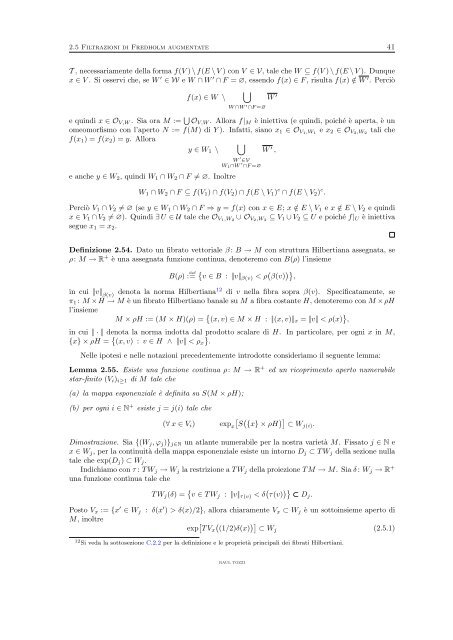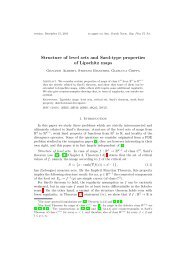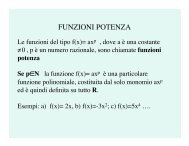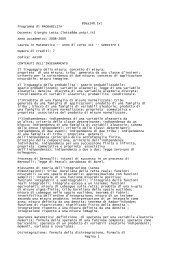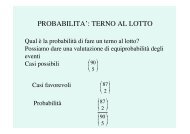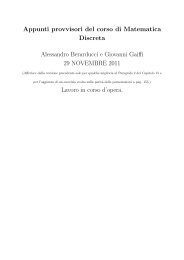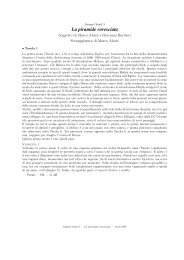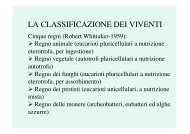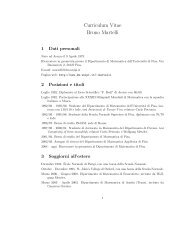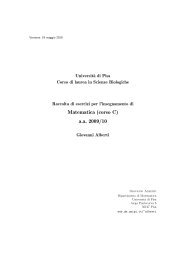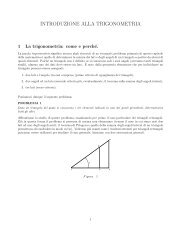Immersioni aperte in dimensione infinita - Dipartimento di Matematica
Immersioni aperte in dimensione infinita - Dipartimento di Matematica
Immersioni aperte in dimensione infinita - Dipartimento di Matematica
Create successful ePaper yourself
Turn your PDF publications into a flip-book with our unique Google optimized e-Paper software.
2.5 Filtrazioni <strong>di</strong> Fredholm augmentate 41<br />
T , necessariamente della forma f(V ) \ f(E \ V ) con V ∈ V, tale che W ⊆ f(V ) \ f(E \ V ). Dunque<br />
x ∈ V . Si osservi che, se W ′ ∈ W e W ∩ W ′ ∩ F = ∅, essendo f(x) ∈ F , risulta f(x) /∈ W ′ . Perciò<br />
<br />
f(x) ∈ W \<br />
W ′<br />
W ∩W ′ ∩F =∅<br />
e qu<strong>in</strong><strong>di</strong> x ∈ OV,W . Sia ora M := OV,W . Allora f|M è <strong>in</strong>iettiva (e qu<strong>in</strong><strong>di</strong>, poiché è aperta, è un<br />
omeomorfismo con l’aperto N := f(M) <strong>di</strong> Y ). Infatti, siano x1 ∈ OV1,W1 e x2 ∈ OV2,W2 tali che<br />
f(x1) = f(x2) = y. Allora<br />
<br />
y ∈ W1 \<br />
W ′ ,<br />
e anche y ∈ W2, qu<strong>in</strong><strong>di</strong> W1 ∩ W2 ∩ F = ∅. Inoltre<br />
W ′ ∈V<br />
W1∩W ′ ∩F =∅<br />
W1 ∩ W2 ∩ F ⊆ f(V1) ∩ f(V2) ∩ f(E \ V1) c ∩ f(E \ V2) c .<br />
Perciò V1 ∩ V2 = ∅ (se y ∈ W1 ∩ W2 ∩ F ⇒ y = f(x) con x ∈ E; x /∈ E \ V1 e x /∈ E \ V2 e qu<strong>in</strong><strong>di</strong><br />
x ∈ V1 ∩ V2 = ∅). Qu<strong>in</strong><strong>di</strong> ∃ U ∈ U tale che OV1,W2 ∪ OV2,W2 ⊆ V1 ∪ V2 ⊆ U e poiché f|U è <strong>in</strong>iettiva<br />
segue x1 = x2.<br />
Def<strong>in</strong>izione 2.54. Dato un fibrato vettoriale β : B → M con struttura Hilbertiana assegnata, se<br />
ρ: M → R + è una assegnata funzione cont<strong>in</strong>ua, denoteremo con B(ρ) l’<strong>in</strong>sieme<br />
B(ρ) : def<br />
= v ∈ B : |v | β(v) < ρ β(v) ,<br />
<strong>in</strong> cui |v | β(v) denota la norma Hilbertiana 12 <strong>di</strong> v nella fibra sopra β(v). Specificatamente, se<br />
π1 : M ×H → M è un fibrato Hilbertiano banale su M a fibra costante H, denoteremo con M ×ρH<br />
l’<strong>in</strong>sieme<br />
M × ρH := (M × H)(ρ) = (x, v) ∈ M × H : |(x, v)|x = |v | < ρ(x) ,<br />
<strong>in</strong> cui | · || denota la norma <strong>in</strong>dotta dal prodotto scalare <strong>di</strong> H. In particolare, per ogni x <strong>in</strong> M,<br />
{x} × ρH = <br />
(x, v) : v ∈ H ∧ |v | < ρx .<br />
Nelle ipotesi e nelle notazioni precedentemente <strong>in</strong>trodotte consideriamo il seguente lemma:<br />
Lemma 2.55. Esiste una funzione cont<strong>in</strong>ua ρ: M → R + ed un ricoprimento aperto numerabile<br />
star-f<strong>in</strong>ito (Vi)i≥1 <strong>di</strong> M tale che<br />
(a) la mappa esponenziale è def<strong>in</strong>ita su S(M × ρH);<br />
(b) per ogni i ∈ N + esiste j = j(i) tale che<br />
<br />
(∀ x ∈ Vi) expx S {x} × ρH ⊂ Wj(i).<br />
Dimostrazione. Sia {(Wj, ϕj)}j∈N un atlante numerabile per la nostra varietà M. Fissato j ∈ N e<br />
x ∈ Wj, per la cont<strong>in</strong>uità della mappa esponenziale esiste un <strong>in</strong>torno Dj ⊂ T Wj della sezione nulla<br />
tale che exp(Dj) ⊂ Wj.<br />
In<strong>di</strong>chiamo con τ : T Wj → Wj la restrizione a T Wj della proiezione T M → M. Sia δ : Wj → R +<br />
una funzione cont<strong>in</strong>ua tale che<br />
T Wj(δ) = v ∈ T Wj : |v | τ(v) < δ τ(v) ⊂ Dj.<br />
Posto Vx := {x ′ ∈ Wj : δ(x ′ ) > δ(x)/2}, allora chiaramente Vx ⊂ Wj è un sotto<strong>in</strong>sieme aperto <strong>di</strong><br />
M, <strong>in</strong>oltre<br />
exp <br />
T Vx (1/2)δ(x) ⊂ Wj<br />
(2.5.1)<br />
12 Si veda la sottosezione C.2.2 per la def<strong>in</strong>izione e le proprietà pr<strong>in</strong>cipali dei fibrati Hilbertiani.<br />
RAUL TOZZI


